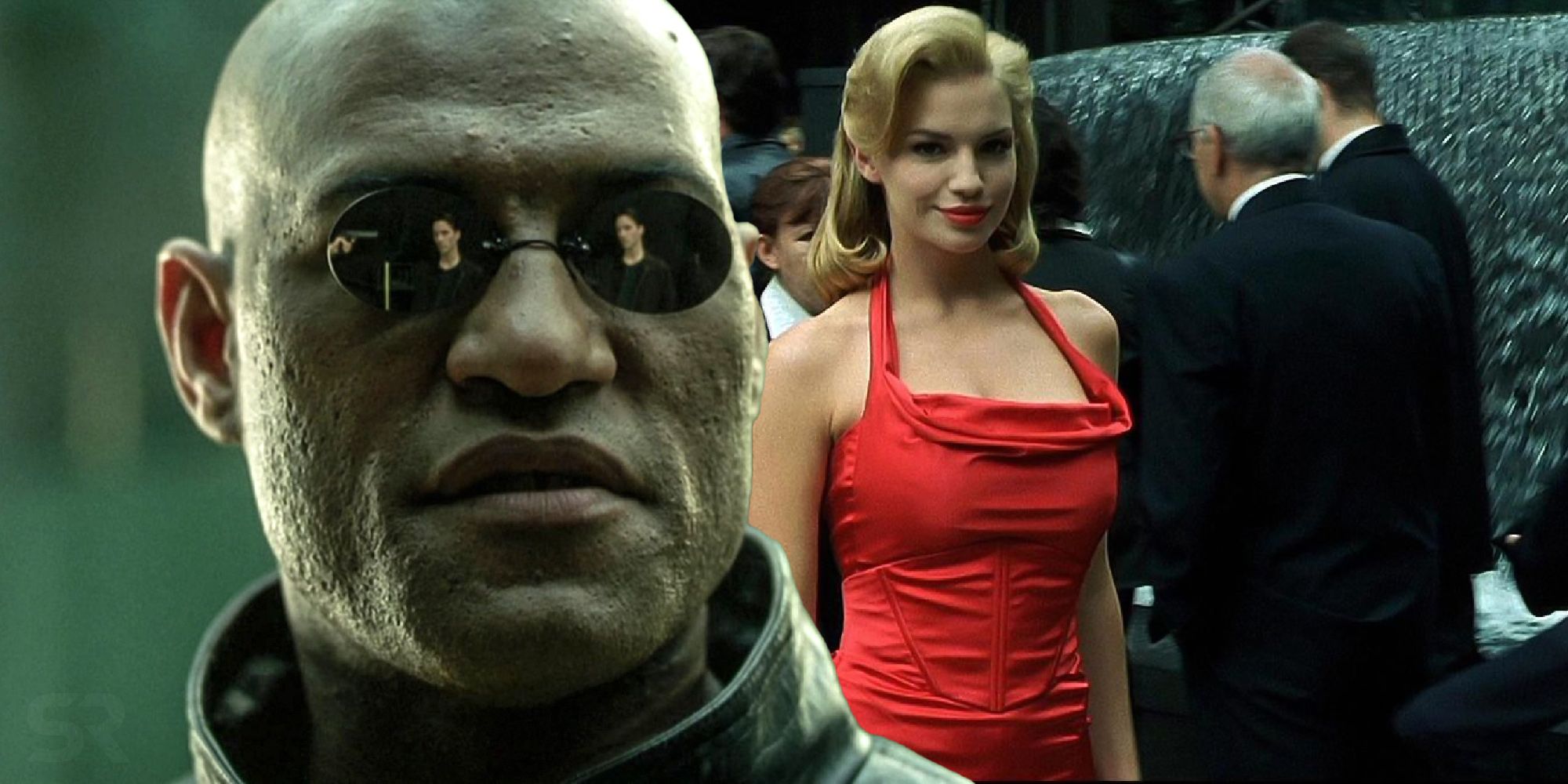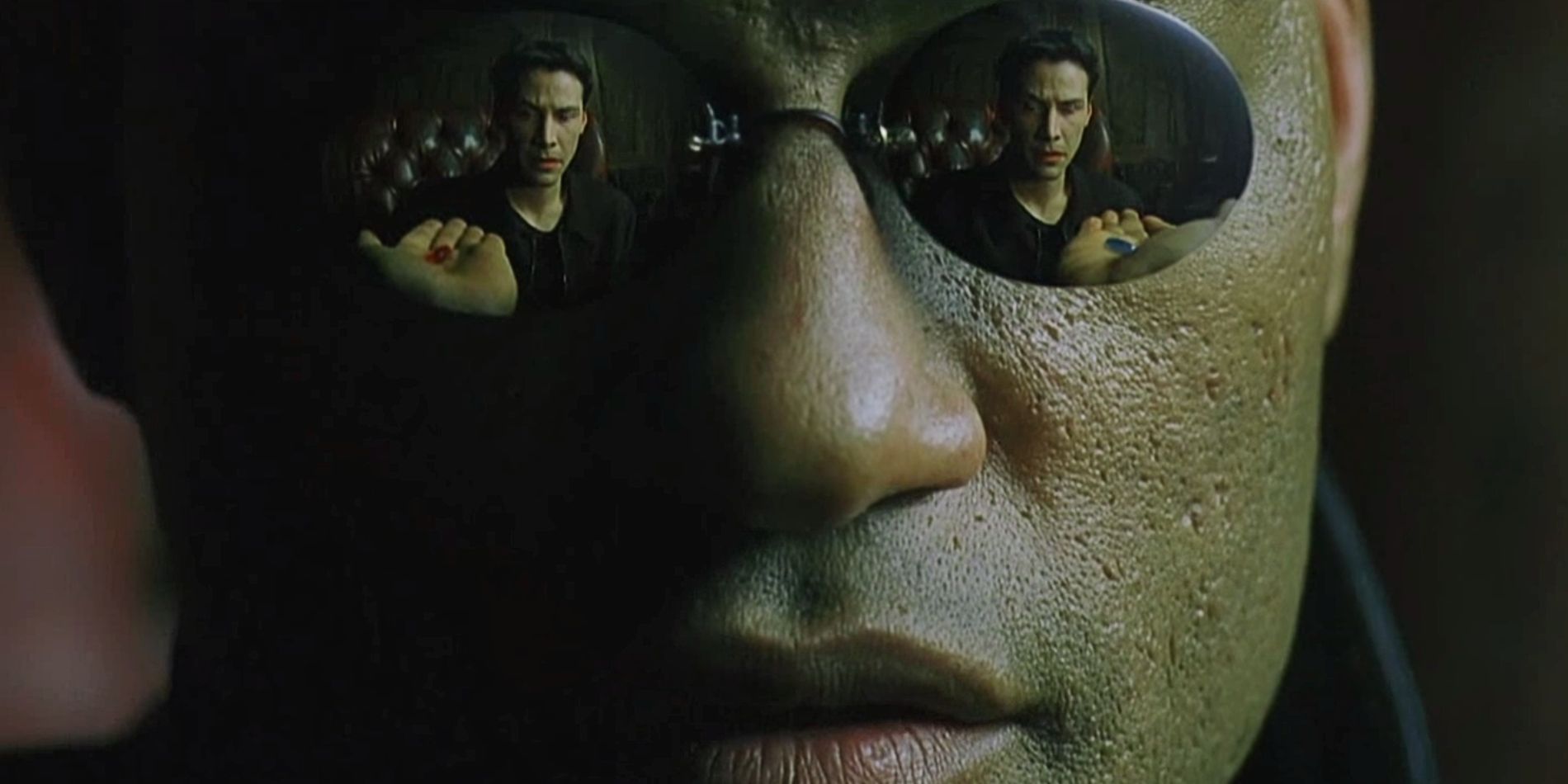What does the woman in the red dress really mean in the Wachowskis' 1999 sci-fi classic, The Matrix? Loosely based on Jean Baudrillard’s 1981 philosophical treatise, Simulacra and Simulation, which dwells on the nature of the real and the hyperreal, The Matrix is akin to a thematic and visual lexicon - rife with layers and symbolism as intricate as the film’s virtual world itself.
In order to better understand the woman in the red dress, one must understand the scene’s contextual eminence. On taking the red pill, Neo (Keanu Reeves) is able to see the world’s true construct, becoming hyper-aware of the reality of the human race, most of which is in deep slumber and blind to the truth. It becomes clear that the majority of the human race has been reduced to an unwitting simulacrum to serve the machines, reminiscent of Plato’s Allegory of the Cave - an illusion that can only be dispelled by the emergence of ‘the One’. This is a rude awakening for Neo, but a necessary one. While Morpheus (Laurence Fishburne) guides him through the programmed maze of the matrix, Neo gets distracted by a stunning woman in red. This prompts Morpheus to ask, “Were you listening to me, Neo? Or were you looking at the woman in the red dress?” As Neo falters, he is held at gunpoint by Agent Smith.
On analyzing this particular scene in The Matrix, it becomes clear that the woman in red is a deliberate distraction, a simulated character who is a part of the Agent training program. While the woman appears harmless, she wears a vibrant shade of red in order to distract trainees, triggering what's known as the "red dress effect" - a phenomenon where women wearing red are perceived to be more attractive and open to sexual advances than those in plain colors. This doesn't just apply to form-fitting dresses; the "red dress effect" has been shown to work even in a study where subjects were shown a photo of a woman wearing a white T-shirt and a red T-shirt in the same style.
There's more to the woman in the red dress than just being eye candy for Neo, though. The stark contrast between the monochrome attire of the pedestrians and the woman in red in The Matrix serves to highlight the gap between appearance and reality. The moment she senses a threat to the matrix, she is overwritten by an armed and dangerous agent, underlining the themes of illusion and control within the framework of the system. Her character also alludes to the Scarlet Woman or the Whore of Babylon, references lifted directly from the Book of Revelations, and the mythic lore of the goddess Babalon in Thelema.
If one were to delve deeper, Morpheus is named after the eponymous messenger of the gods in ancient Greek mythology, who is known for entering the dreams of mortals to share esoteric knowledge - which is essentially what Morpheus does to Neo in order to usher his awakening. While Morpheus represents Truth, Neo (or νέος in ancient Greek) means “young one,” which is a reference to his disillusioned state of mind after learning the truth, still fresh from its unshackling. By pointing out the reality behind the woman in red, Morpheus asks Neo to peer beyond the web of deception and lies within the training simulation, which is designed to stimulate and distract.
Connecting the symbolism of the woman in The Matrix to their own lives, the Scarlet Woman represents a lure within our own worldly construct - be it rampant consumerism, or pre-programmed choices of a murkier sort. After all, the matrix is primarily a means to exert control and to keep its subjects docile. As Neo begins to understand the nature of illusion, he becomes better equipped in his journey as “The One”, which in turn, allows him to escape the prison of surveillance and taste true freedom in the process.



